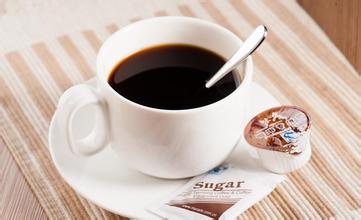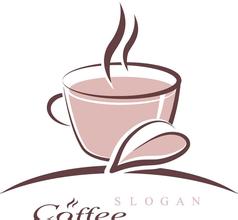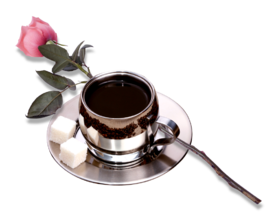Introduction of Starbucks Sumatra Coffee Bean semi-washed Flavor Price Manor
Washing is the most technical way to pick up beans, and the quality of coffee is ensured through multiple sieving procedures. First move the red fruit and half-green and half-red fruit that have sunk into the sink into a large or medium-sized pulp screening machine (PulpingMachines). It is cleverly designed to mechanically press the fruit into a sieve hole, which is exactly the size of the pod (both sheepskin-wrapped coffee beans) to filter out the flesh outside the pod-using unripe fruit to be harder. Pods are not easy to squeeze out, but mature fruits are soft, and pods are easily squeezed out to ward off unripe beans and filter out the sweetest pods, so the setting of machine thrust is very important. too much force will squeeze out hard and astringent unripe beans, damaging the quality of fine beans. The general push force is set to allow 3% of red fruit pods to be squeezed into the sieve hole to ensure that all stiff green fruits are removed.
After taking out the sticky pods of the red fruit, move them into a large sink, followed by the most important washing and fermentation to remove pectin shavings from the pods. This sticky material is not easy to wash away with water, so it is necessary to hydrolyze the pectin with all kinds of bacteria in the tank, decompose the pectin and wash the pods in the tank to accelerate the pectin to break away from the pods. The fermentation process takes about 16 to 36 hours, depending on temperature and humidity, when malic acid is naturally produced in the tank. Citric acid. Acetic acid. Lactic acid and propionic acid. Interestingly, the raw bean itself contains almost no acetic acid, but the fermentation process of washing treatment can increase the acetic acid concentration of the bean, which is beneficial to the flavor of coffee. Not only can these acids inhibit mold parasitism, some acid elves will also be mixed into beans (which is why washed beans taste so sour), but samples must be taken at any time to see if the sticky pectin on the pods is clean, and then decide whether to stop fermentation and take out clean pods. Once 36Murray is more than 72 hours, it may be over-fermented, producing too much fatty acid and butynic acid and giving off a stench, and beans mixed with too much acid will make the coffee too sour and Chongqing is a bad bean.
An excerpt from Sumatran coffee with a large cup of Sumatran coffee in hand, a wonderful warm and mellow feeling arises spontaneously. To me, this feeling is different from any other coffee. After drinking this wonderful brew of coffee for the first time, I feel comfortable and refreshing. In this wonderful experience, I slowly relaxed, completely immersed in this moment, my thoughts drifted far away, and then a drop of coffee unwittingly spilled on my shirt. It's worth it. It's my favorite coffee!
-Gary Elbaum, Business partner, Northwest region, USA excerpt on decaf Sumatran Coffee: decaf Sumatra Coffee is the perfect companion for Italian cheesecake midnight snacks after the movie.
-Karla Bjorklund, Store partner, Vancouver, Washington, USA National Information: population: 214.9 million (estimated in 2005, No. 4 in the world)
Area: 190 square kilometers
Education ratio: 88%
Average life expectancy: 70 years
Anecdote: Indonesia has 17000 islands, of which about 6000 are inhabited.
The major cities are the capital Jakarta (population 8.8 million), Surabaya (population 3 million), Medan (population 2.5 million), Bandung (population 2.5 million), and the other 3 million people in the surrounding areas.
The distribution of the national economy is 14.6 per cent in agriculture, 45 per cent in industry and 40.4 per cent in services (estimated in 2004).
Agricultural products include: Rice, cassava, peanuts, rubber, cocoa, coffee, palm oil, poultry, beef, pork, eggs.

Important Notice :
前街咖啡 FrontStreet Coffee has moved to new addredd:
FrontStreet Coffee Address: 315,Donghua East Road,GuangZhou
Tel:020 38364473
- Prev

Introduction of Coffee Bean Flavor description method Grinding scale production area
Katim belongs to what kind of small grain coffee is suitable to grow in the mountains of 800 to 1800 meters above sea level. If the altitude is too high, it will taste sour, and if it is too low, it will taste bitter. Small grains of coffee are mostly planted in dry and hot valleys about 1100 meters above sea level, so they are moderately sour, rich and mellow. Many areas of Yunnan have a unique environment suitable for the growth of small seed coffee, and the quality of small seed coffee produced is excellent.
- Next

Introduction to the producing area of the flavor description method of Salvadoran coffee washing method
Salvadoran coffee beans Salvadoran coffee flavor: balanced taste, excellent texture suggested baking method: medium to deep, there are many uses of quality beans: El SHB taste characteristics: sour, bitter, sweet mild and moderate. Salvadoran coffee ranks side by side with Mexico and Guatemala as the producers of Asa and Merdo, and is fighting for the first place in China and the United States with other countries.
Related
- Detailed explanation of Jadeite planting Land in Panamanian Jadeite Manor introduction to the grading system of Jadeite competitive bidding, Red bid, Green bid and Rose Summer
- Story of Coffee planting in Brenka region of Costa Rica Stonehenge Manor anaerobic heavy honey treatment of flavor mouth
- What's on the barrel of Blue Mountain Coffee beans?
- Can American coffee also pull flowers? How to use hot American style to pull out a good-looking pattern?
- Can you make a cold extract with coffee beans? What is the right proportion for cold-extracted coffee formula?
- Indonesian PWN Gold Mandrine Coffee Origin Features Flavor How to Chong? Mandolin coffee is American.
- A brief introduction to the flavor characteristics of Brazilian yellow bourbon coffee beans
- What is the effect of different water quality on the flavor of cold-extracted coffee? What kind of water is best for brewing coffee?
- Why do you think of Rose Summer whenever you mention Panamanian coffee?
- Introduction to the characteristics of authentic blue mountain coffee bean producing areas? What is the CIB Coffee Authority in Jamaica?

